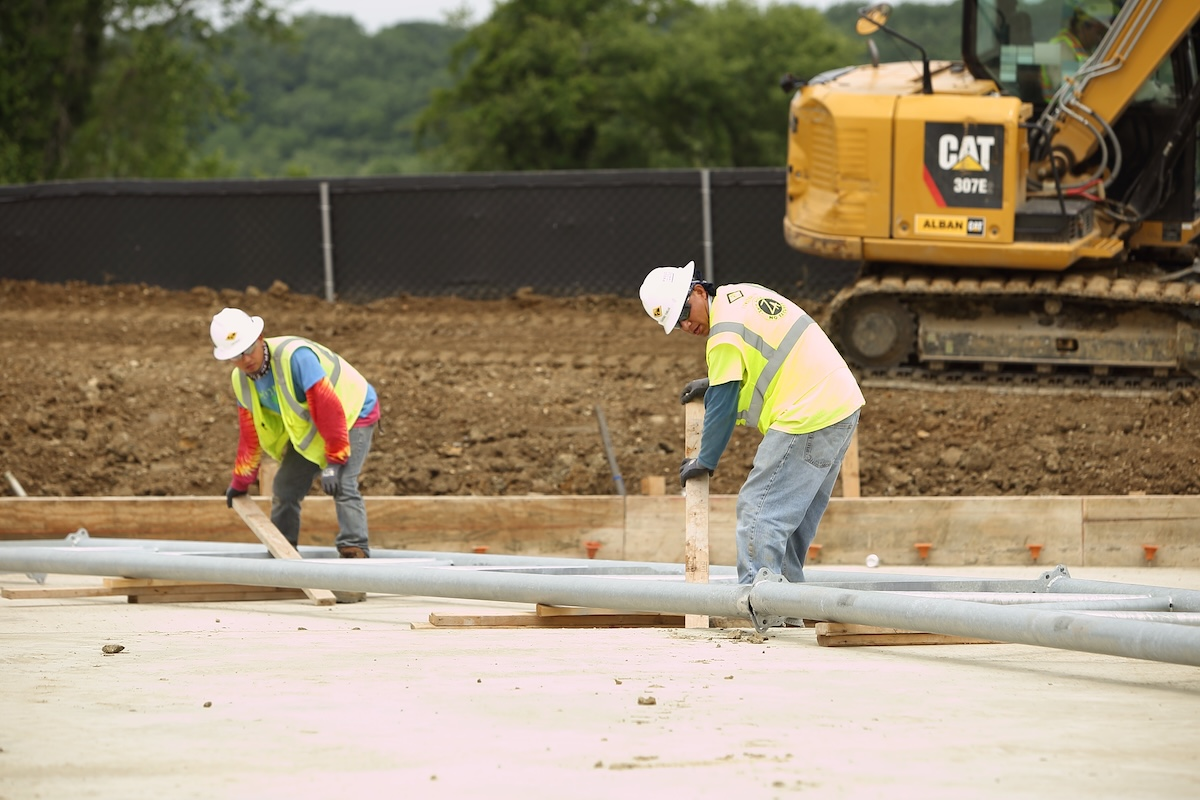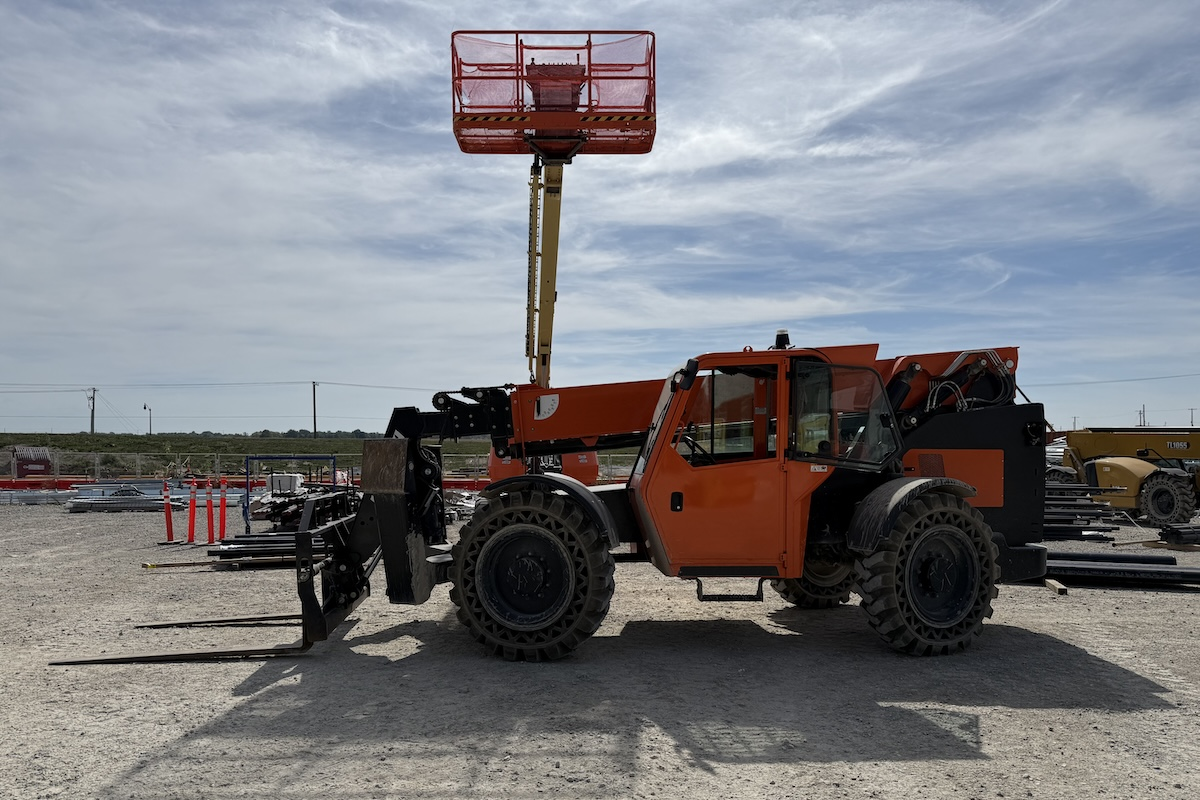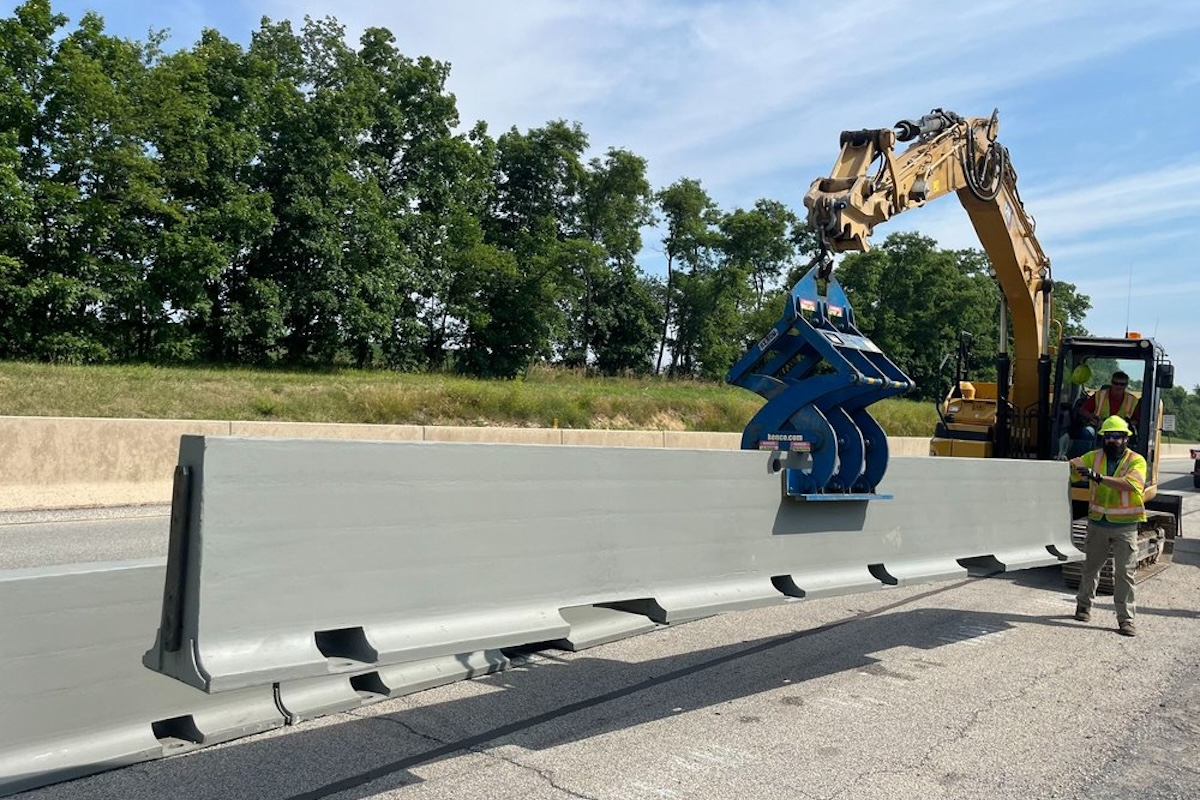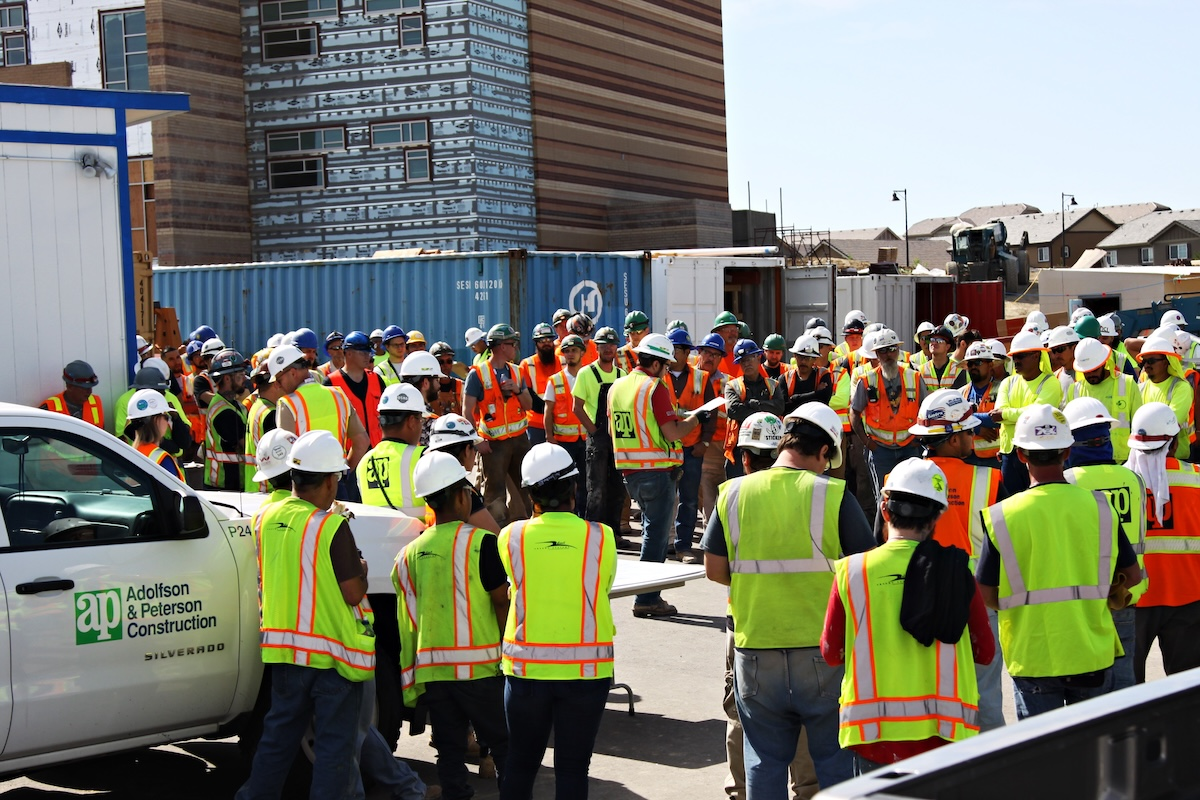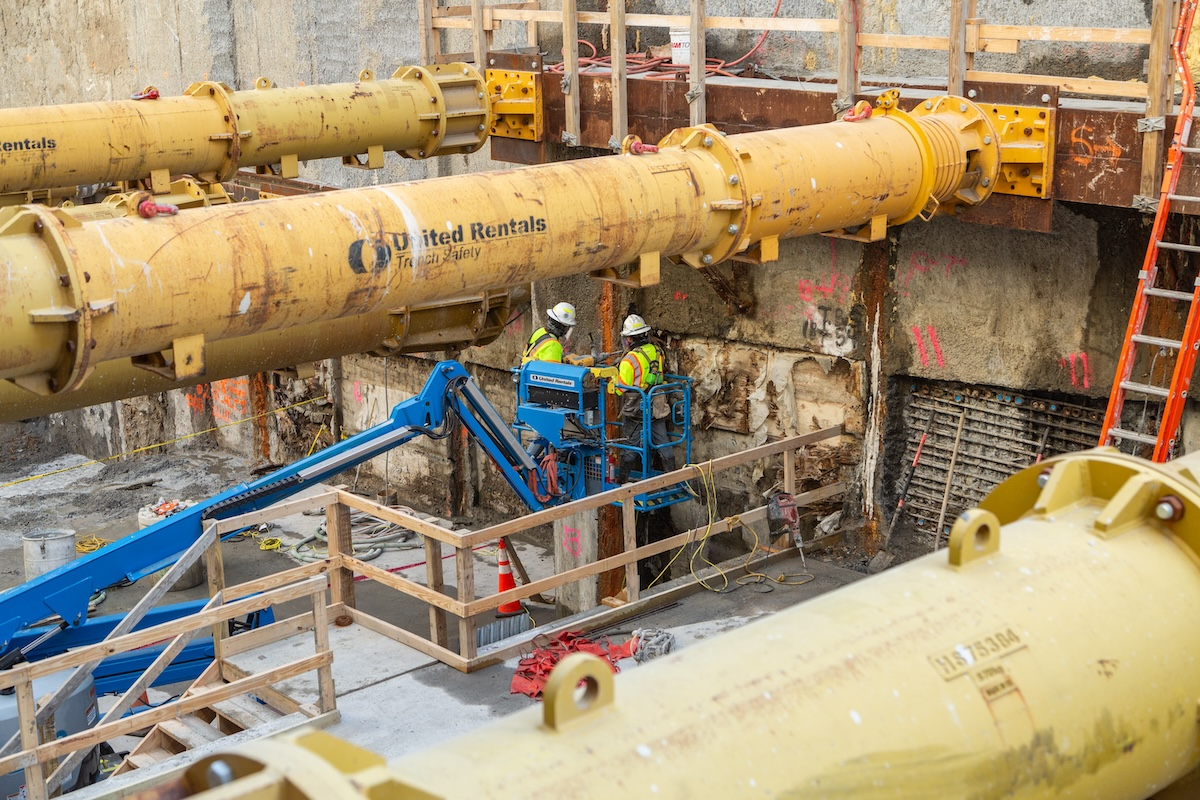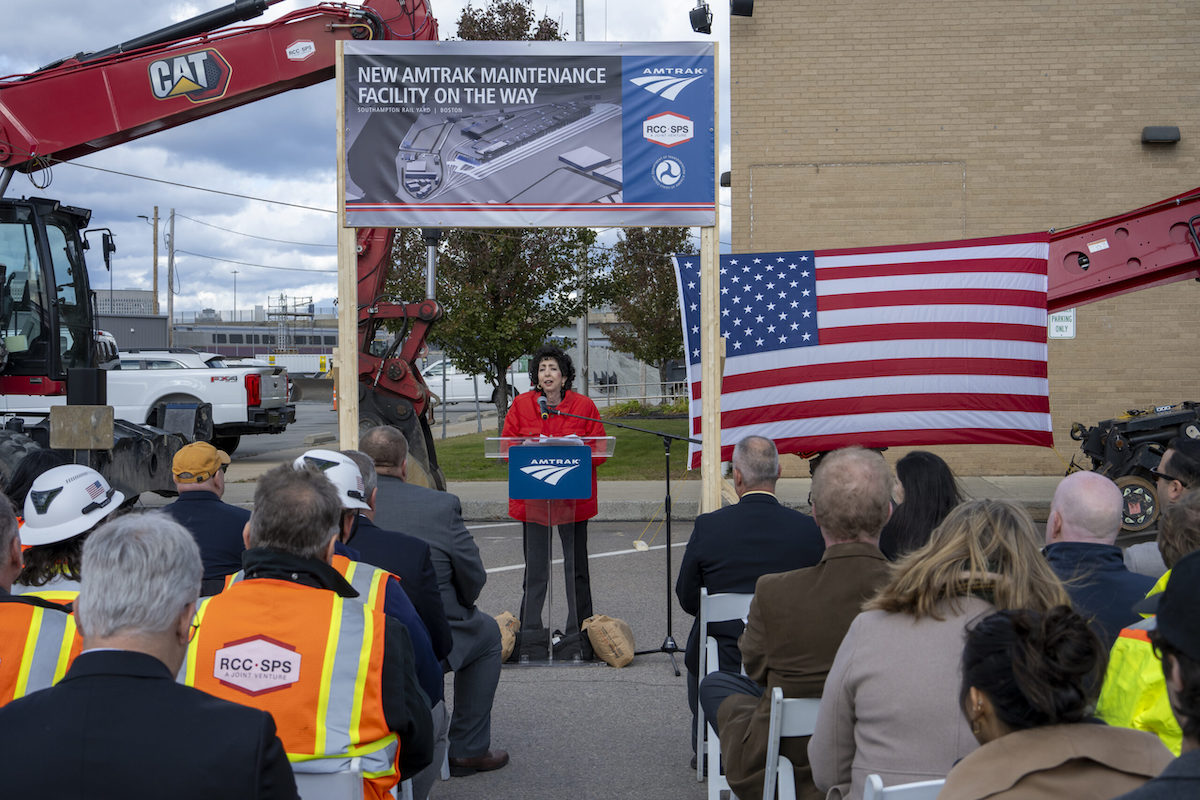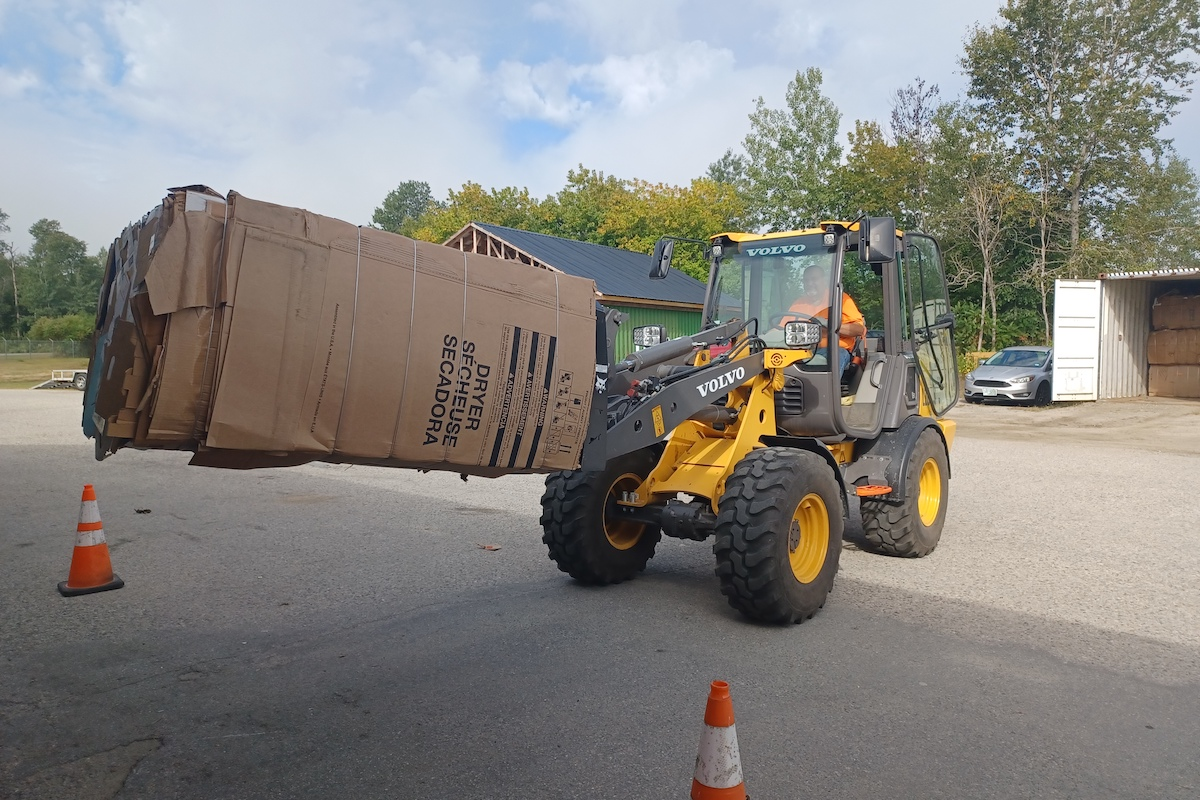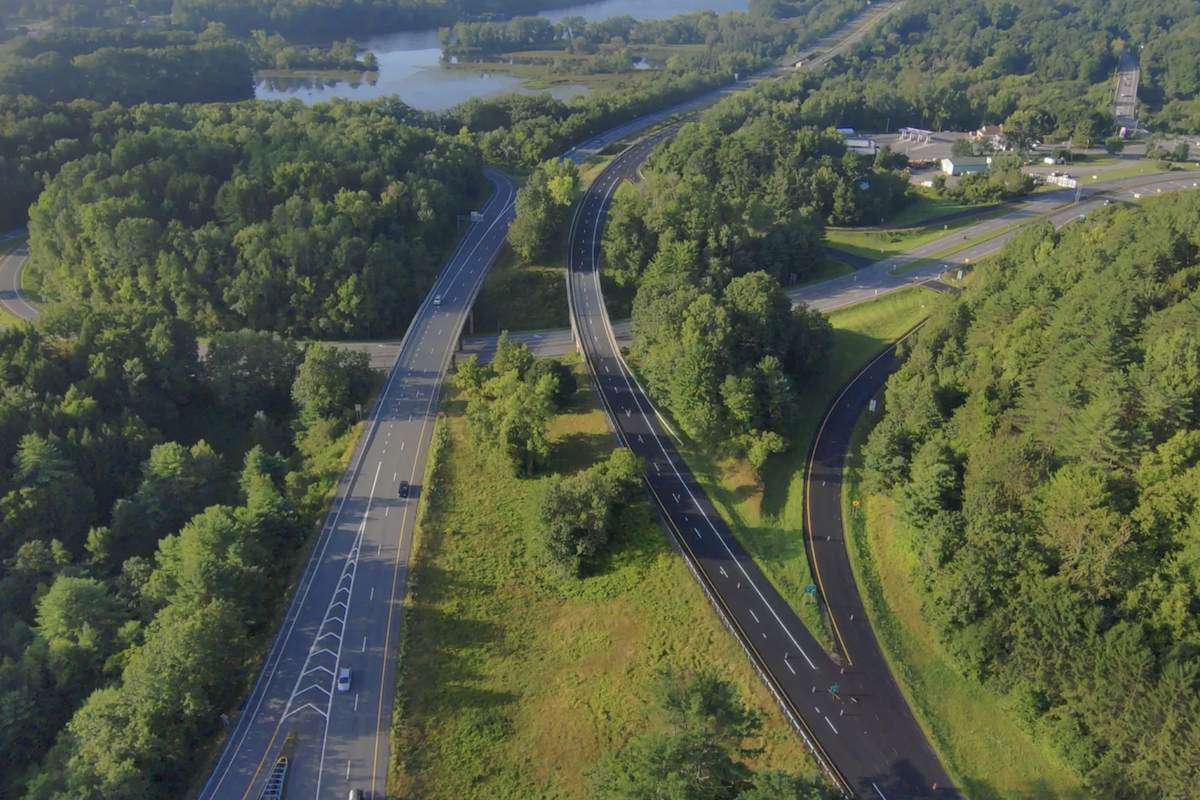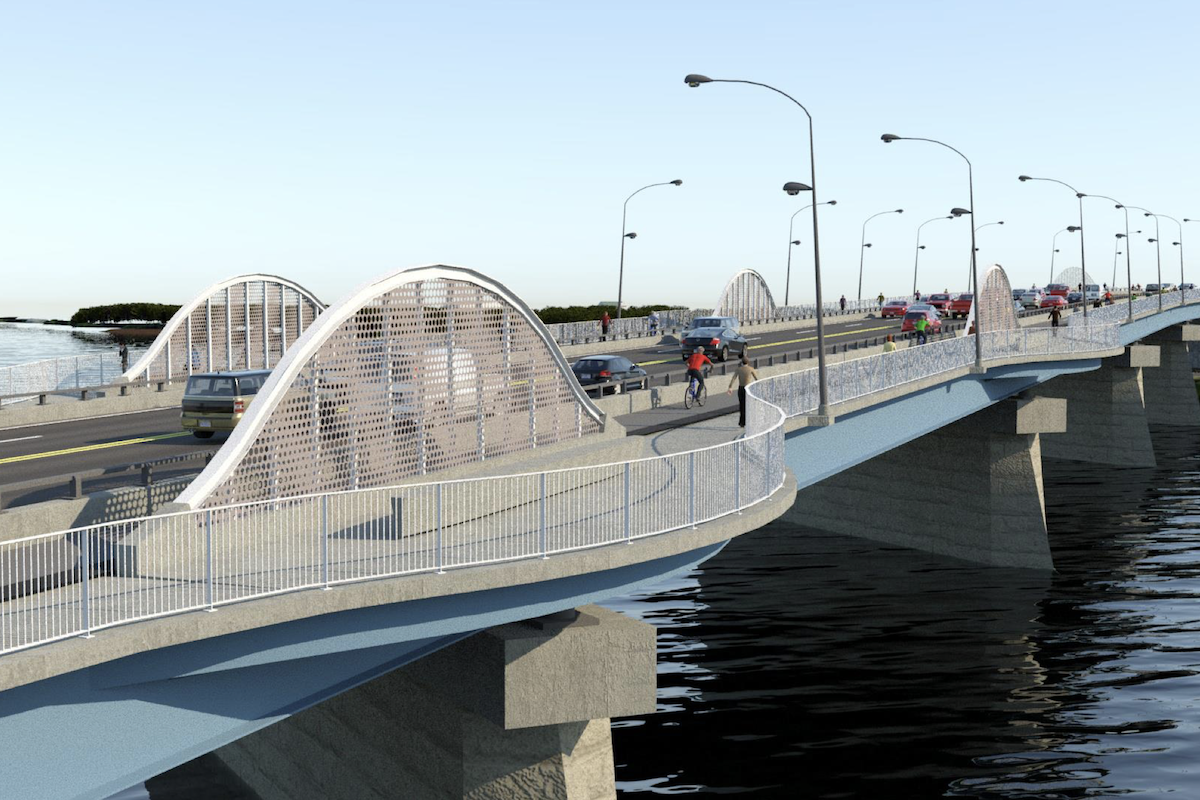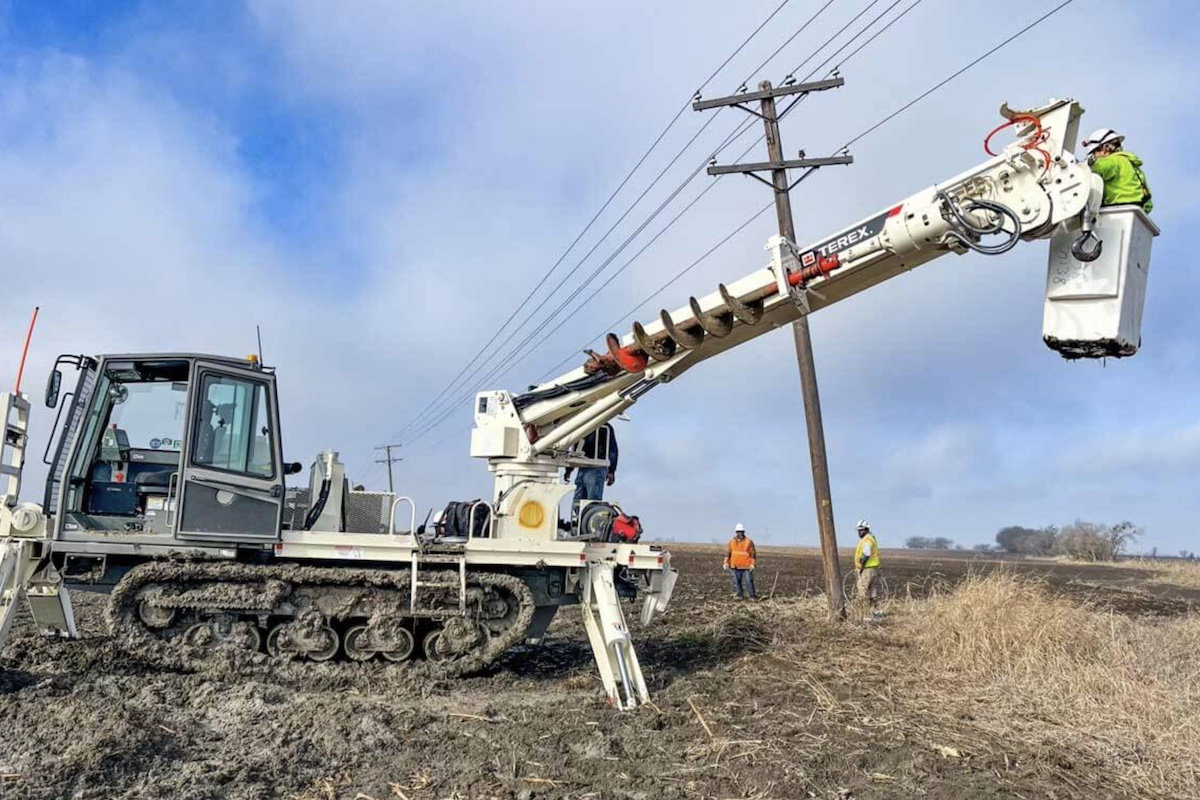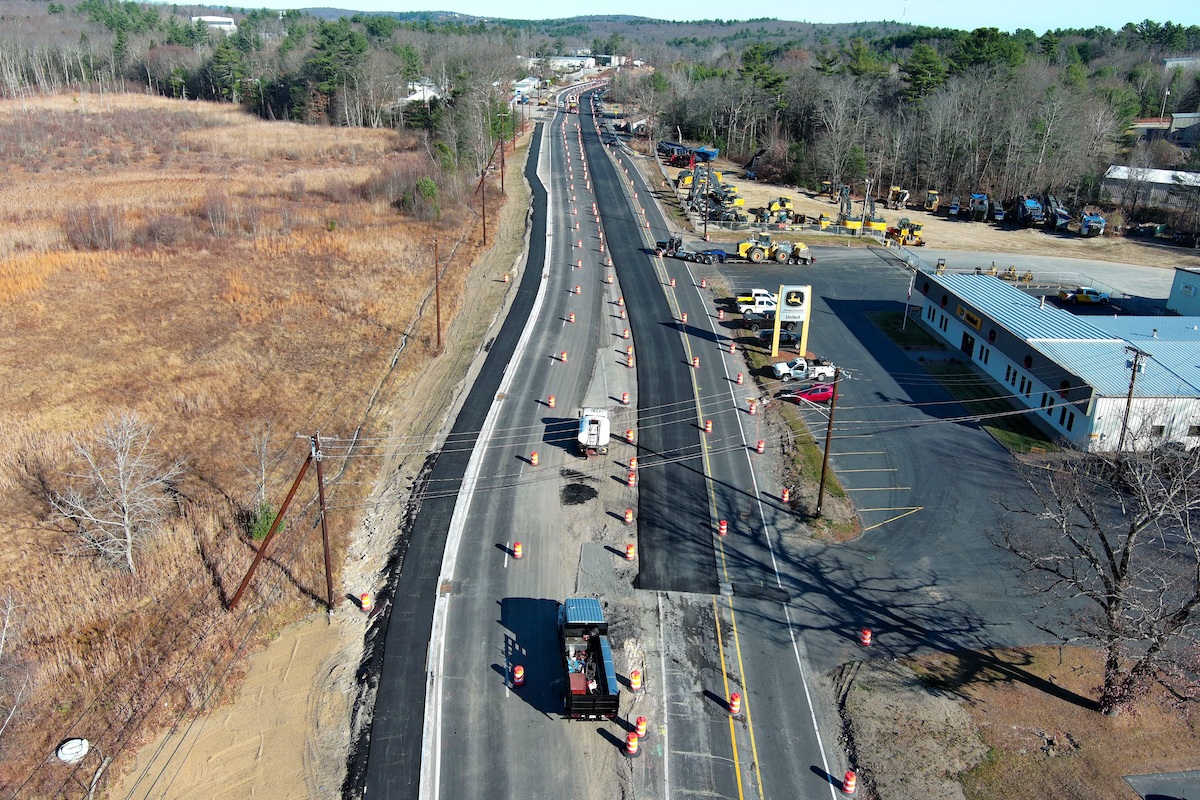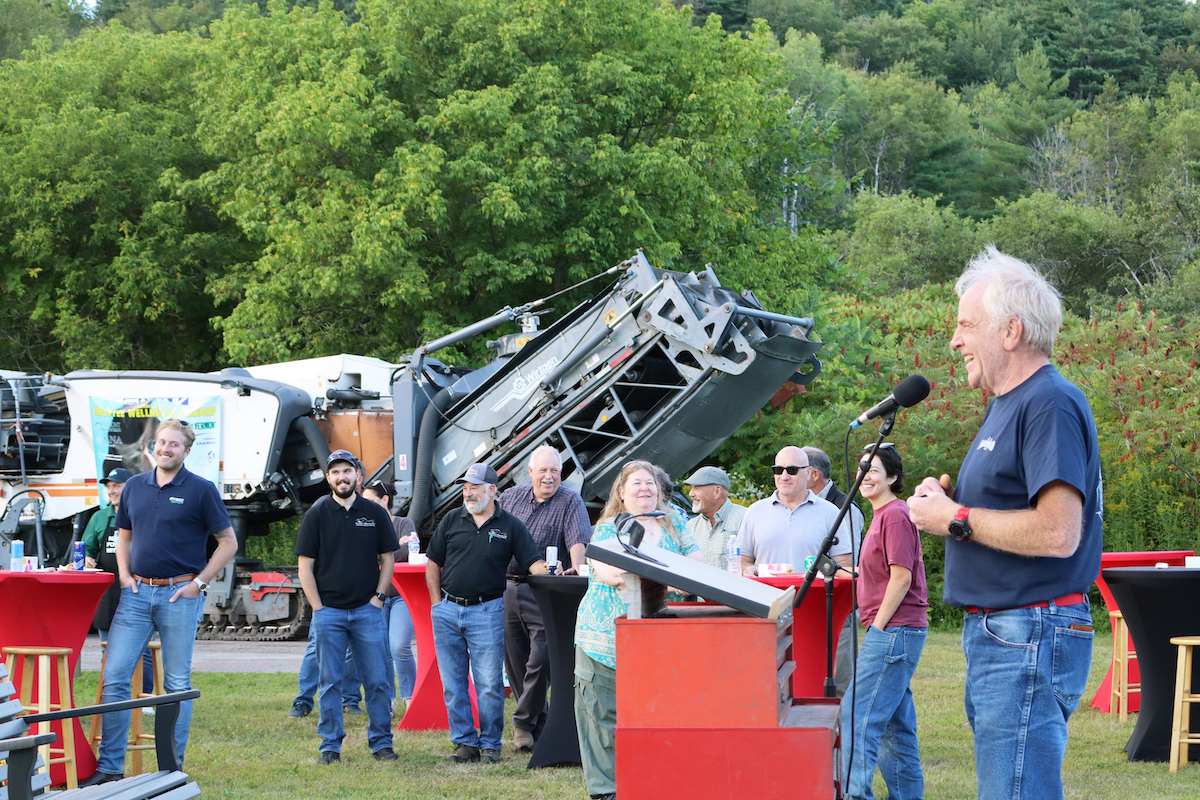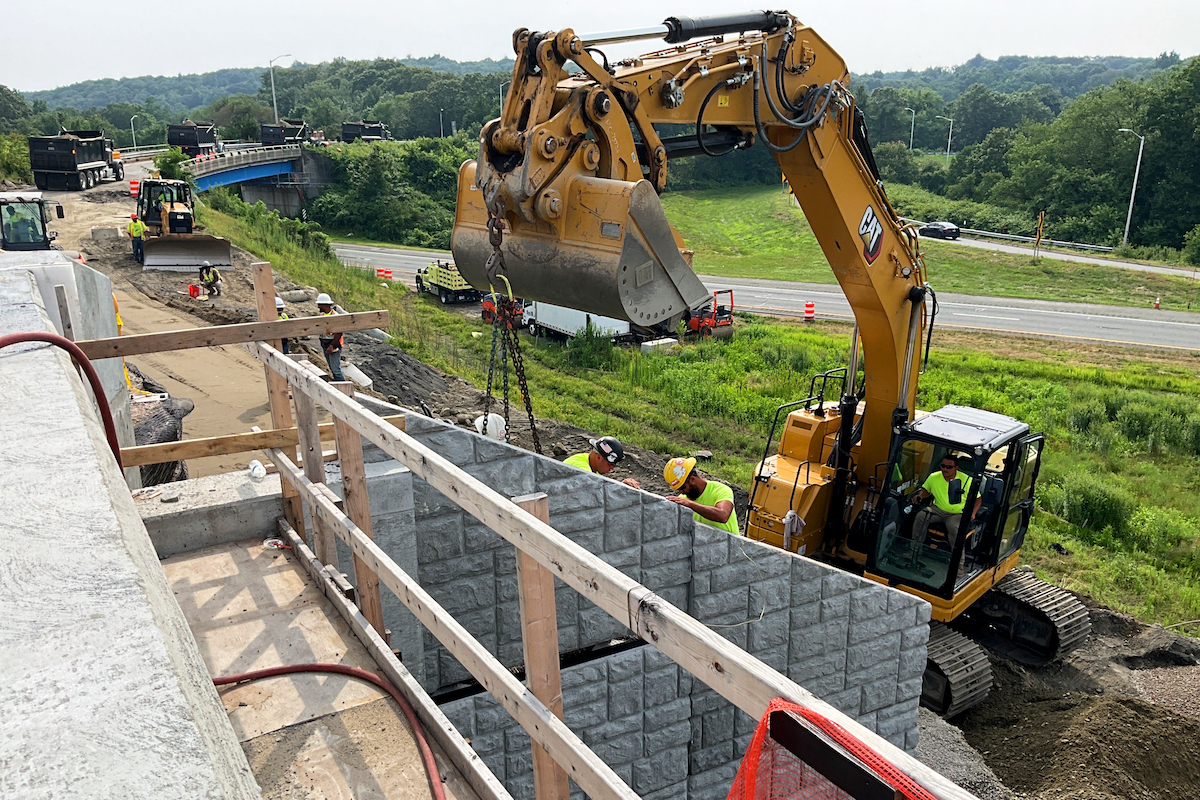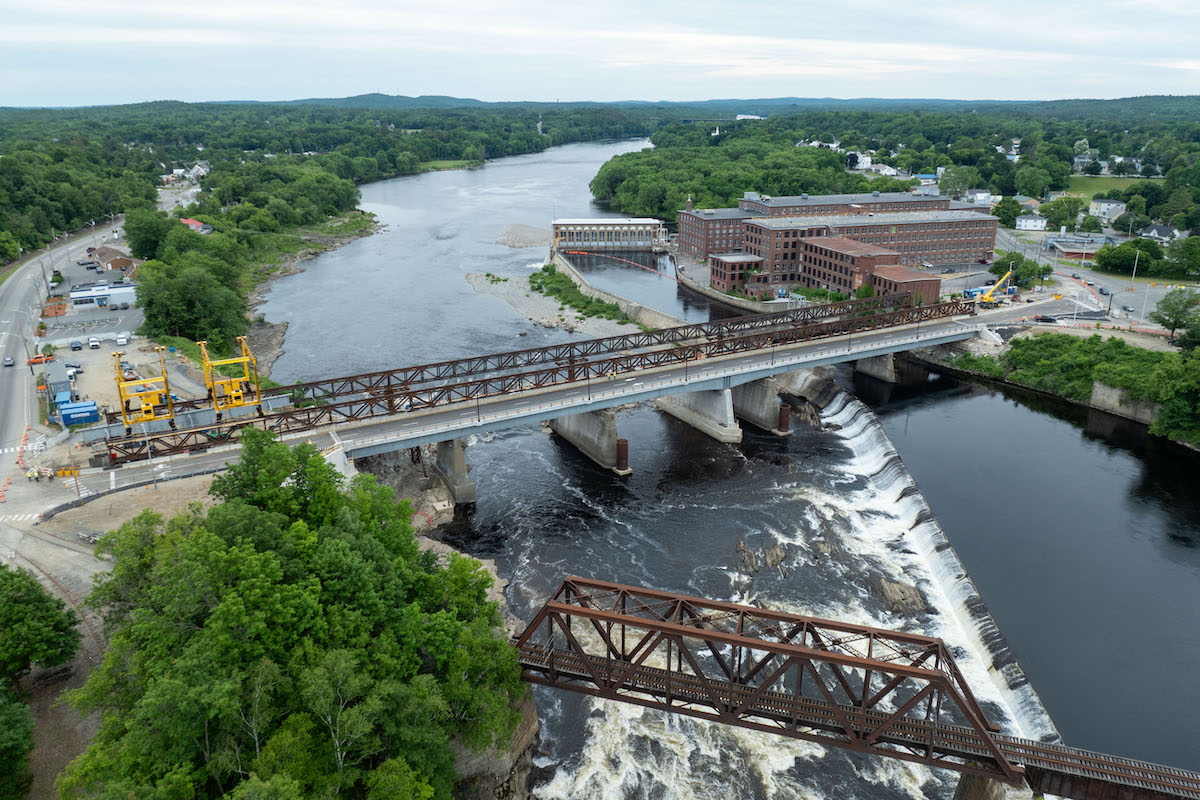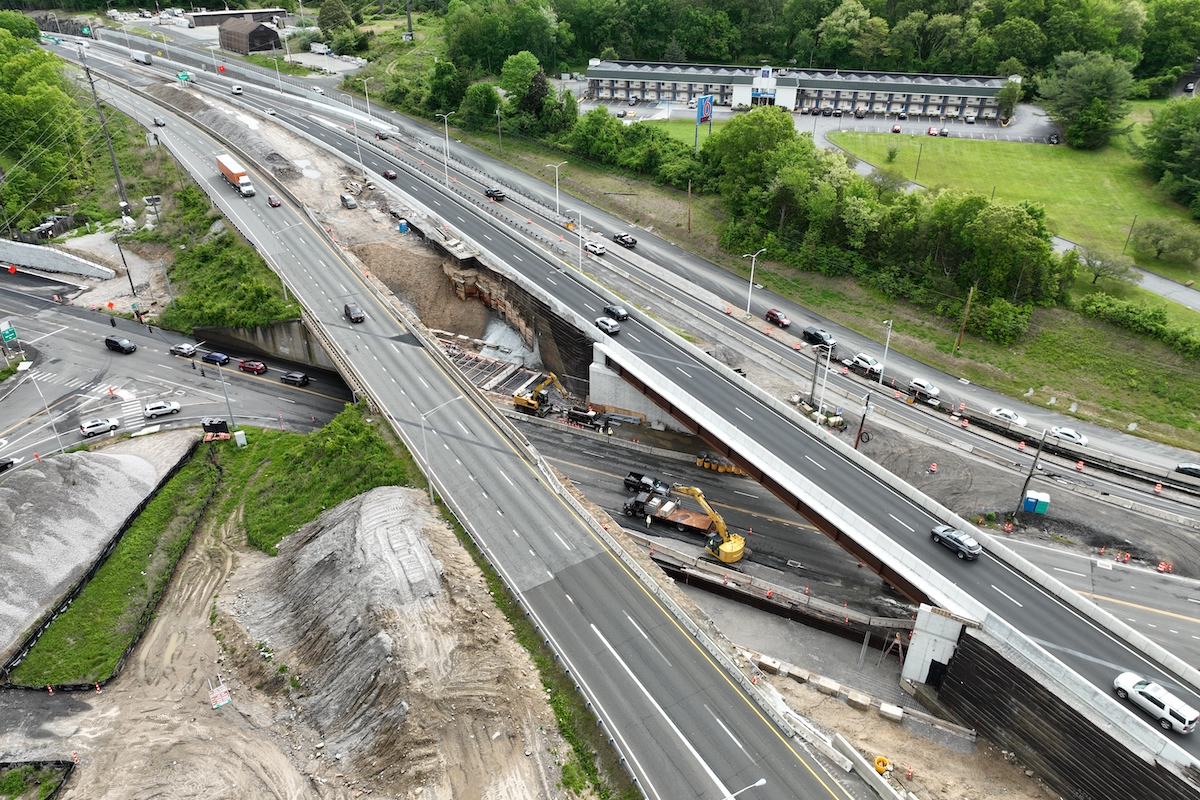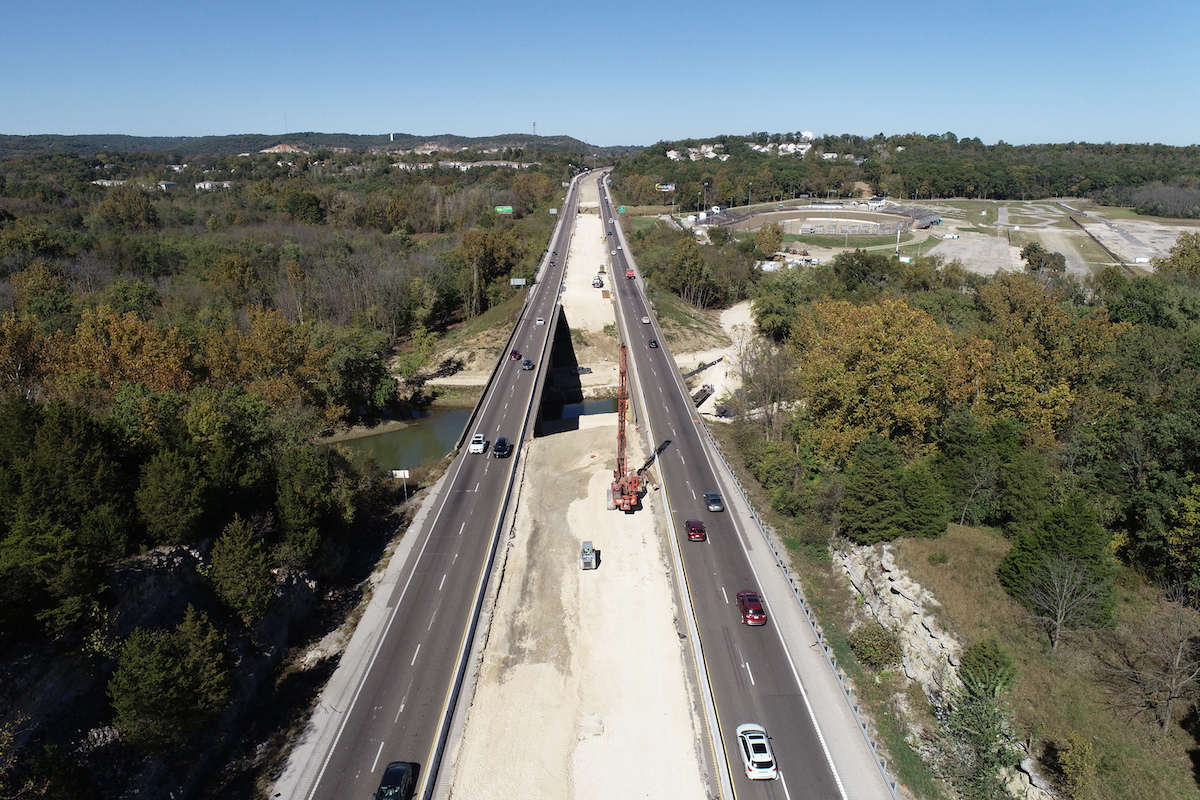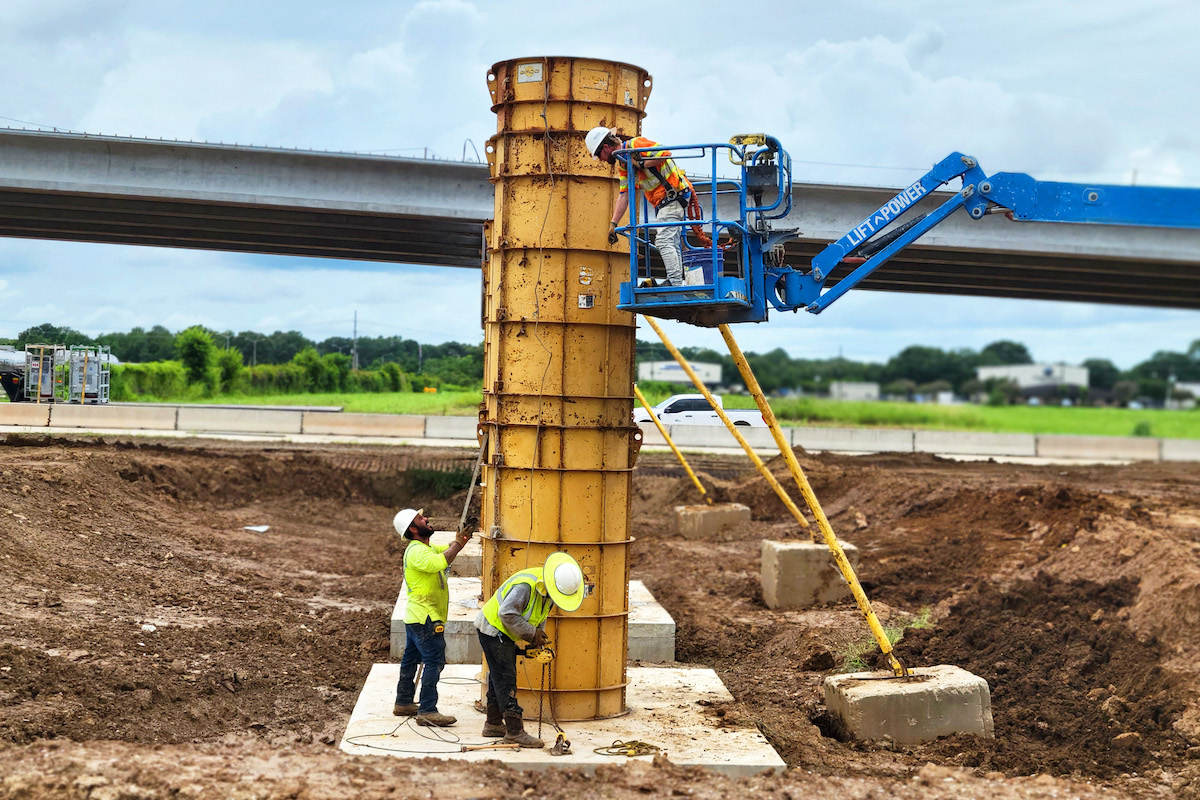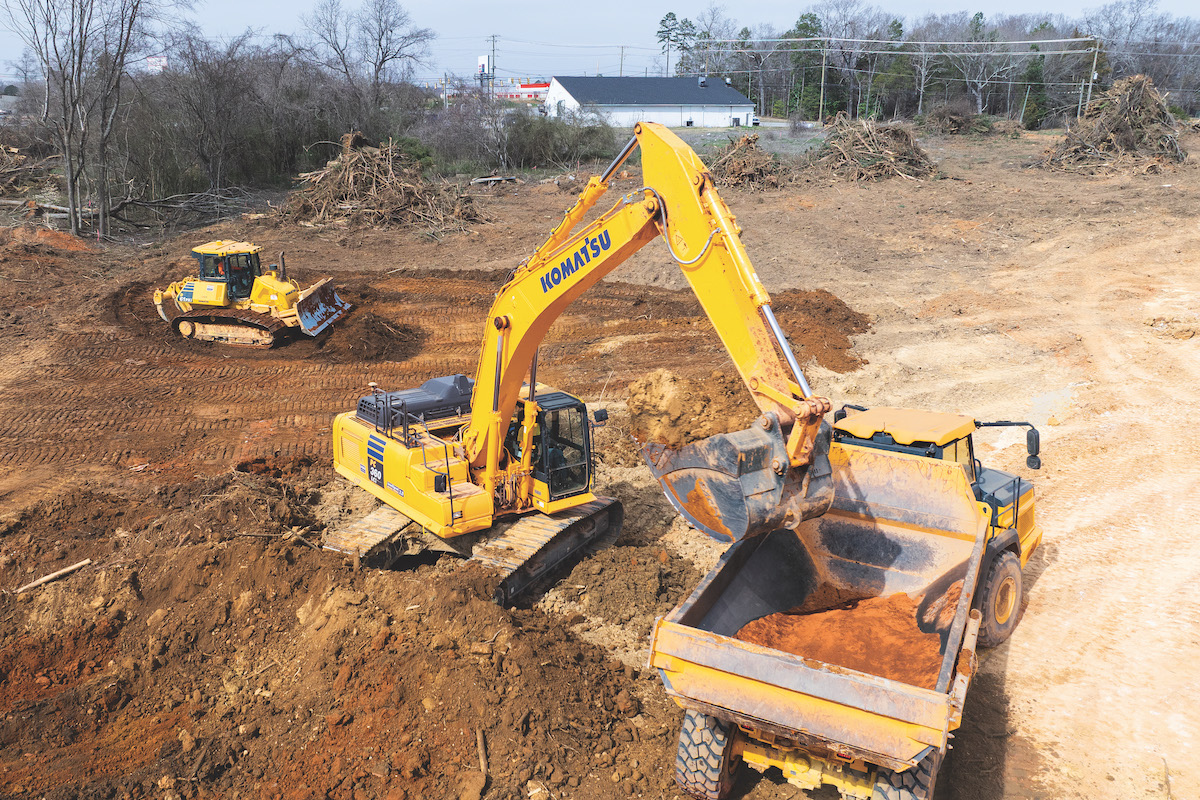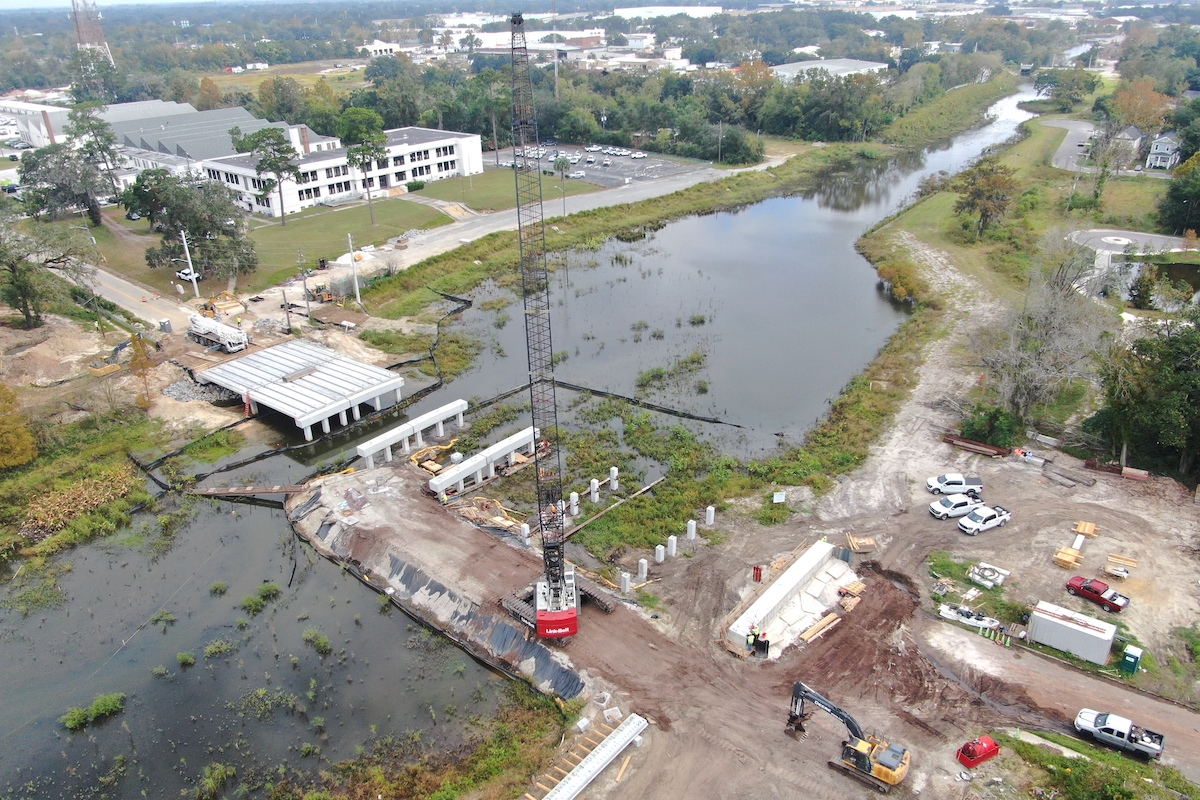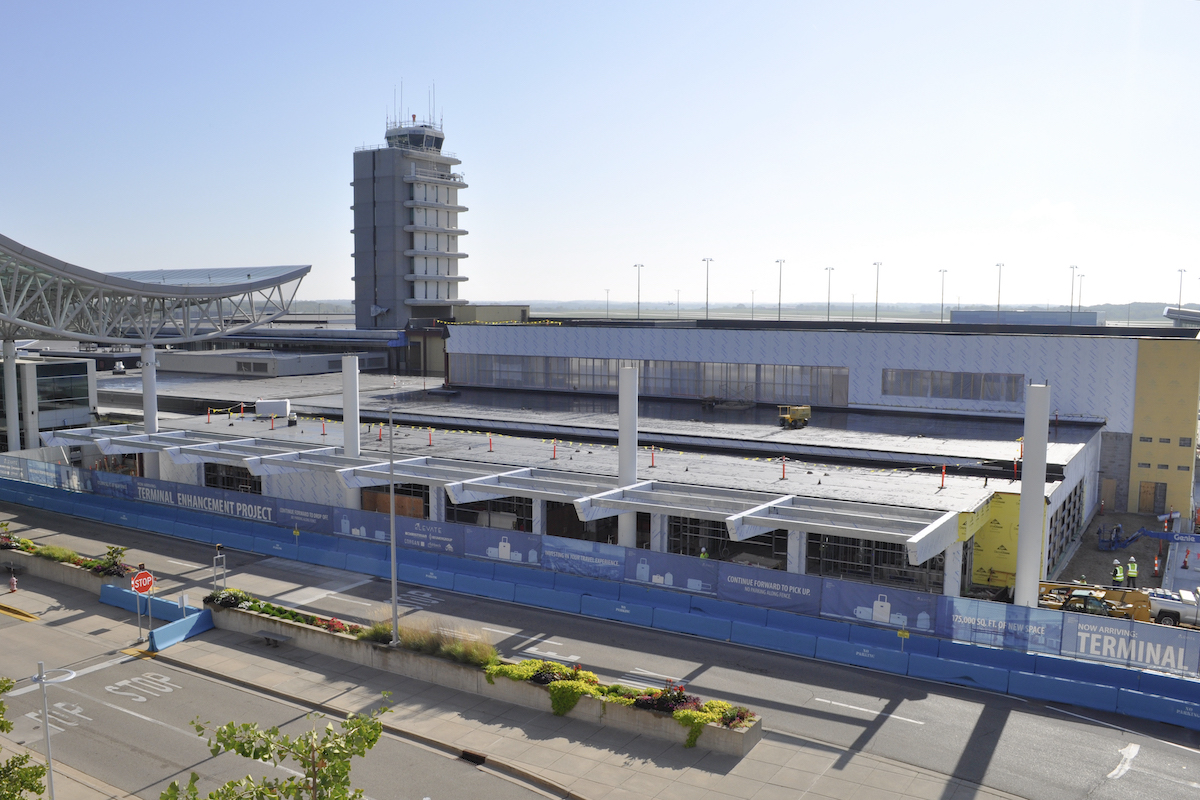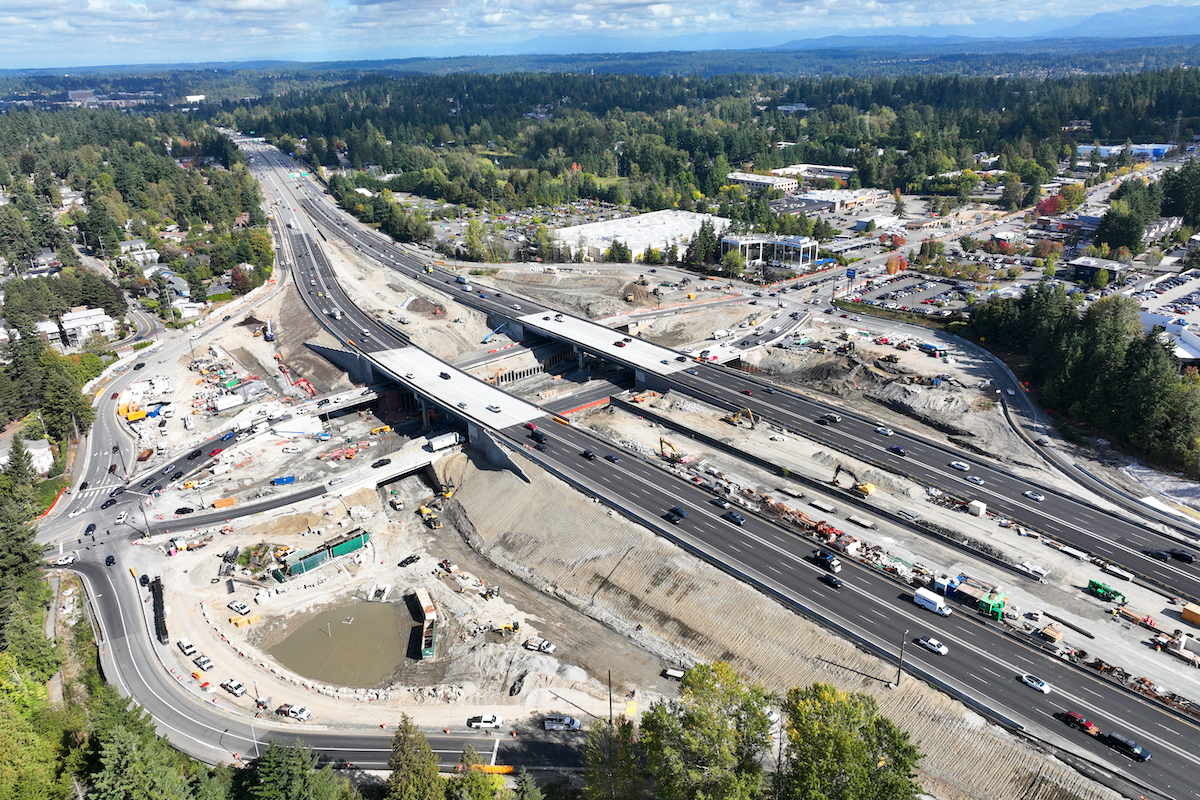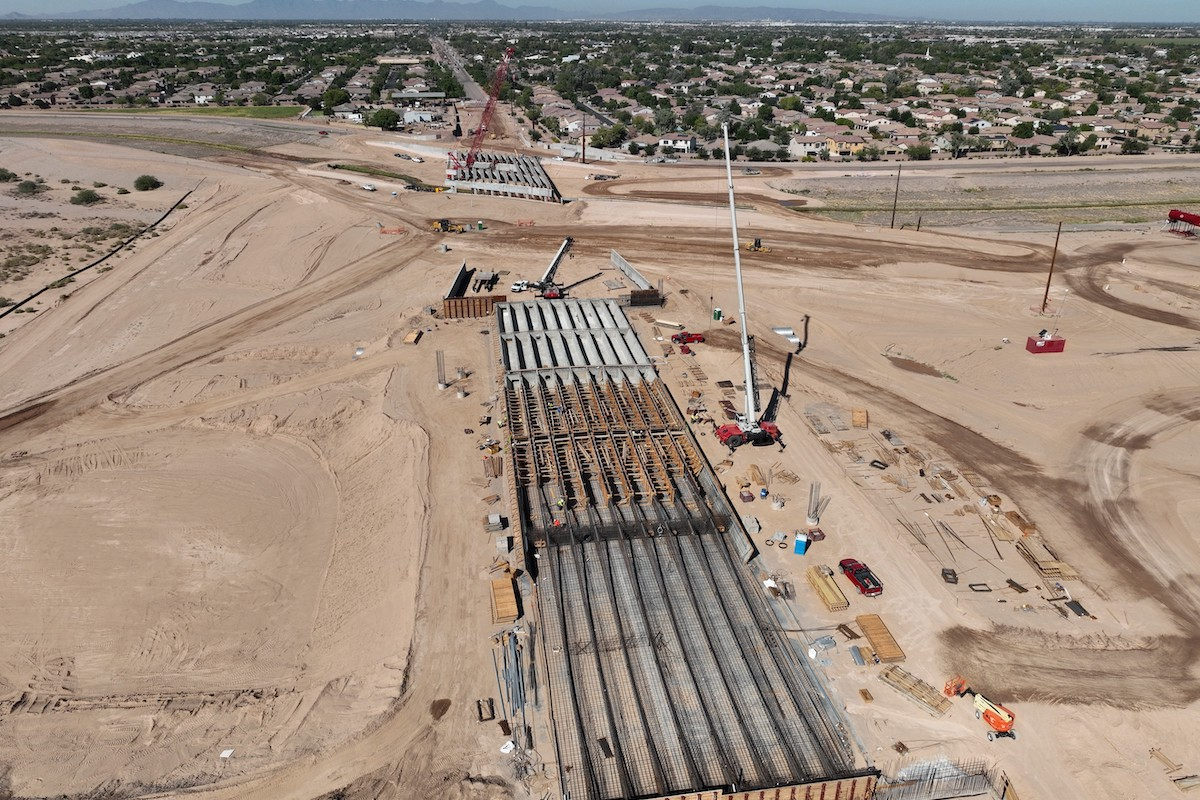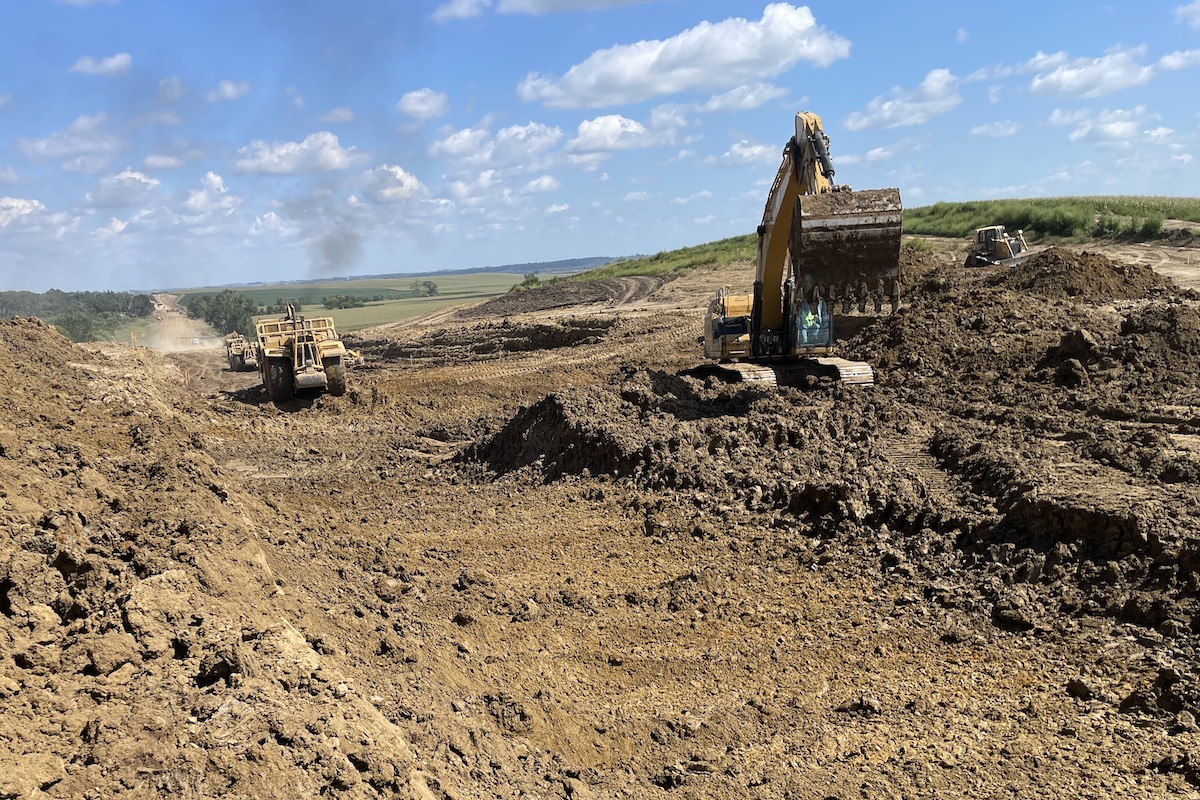Construction workers of Maine contractor Reed & Reed Inc. must be vigilant and nimble as they build a $50 million replacement for the aging Frank J. Wood Bridge, which spans the unpredictable Androscoggin River between Brunswick and Topsham, Maine.
“Dealing with the fluctuating river elevations is the most difficult aspect of this project,” said Dustin Littlefield, Project Manager for the Woolwich, Maine-based contractor. “We could be working in the dry riverbed in the morning and standing in water up to our knees that afternoon. ... It’s a major challenge. We’re working directly below the Brookfield Hydro Station dam, located just about 100 yards upstream.”
Littlefield said job specifications prohibit them from working in the water in the period between March 15 and August 1, so they work right through winter to make up for lost time. It is hoped that winter will be the dryest season, but last winter they had a lot of rain.
The type of construction equipment and personnel employed on the project on any day is influenced by expectations of river flows.
“The site crew might get a phone call from the dam operators telling us they’re taking a turbine offline for necessary maintenance or mechanical work, and we must be ready for the sudden flow of water from the spillway,” Littlefield said.

| Your local Trimble Construction Division dealer |
|---|
| SITECH Northeast |
If the inflow is too abrupt, some equipment such as excavators cannot be walked out of the river bottom in time. In this event, they would rig the equipment for lifting and pluck the machines out of the area using one of six cranes likely to be working on site. (See “Lifting Power on the Job Site”)
The Maine Department of Transportation (MaineDOT) awarded the bridge replacement contract to Reed & Reed Inc. for $49,869,767. Built in 1932 by the Boston Bridge Works, the 815-foot-long through-truss “camelback” structure is the seventh bridge built on the site since the initial one in 1796.
Four of the previous bridges were swept away by Androscoggin River floods. The seventh bridge was built to withstand future floods, but it succumbed to the Great Flood of 1936, which inundated New England and caused widespread damage — including the partial destruction of the Brunswick/Topsham bridge.
A hydraulics analysis of the bridge site during the Great Flood estimates that total flows reached 143,000 cubic feet per second (cfs). There is no specific probability of occurrence for such a deluge. The towns had the bridge rebuilt and at full operating capacity by September of the same year.

| Your local Hyundai dealer |
|---|
| Equipment East |
MaineDOT has prohibited all commercial traffic from using the bridge due to its generally deteriorated condition and a fracture critical rating for floor beams that are not redundant in the transverse direction. A fracture critical bridge is vulnerable to collapse of one or more spans because of the failure in tension of a single element.
While a fracture critical design is not considered unsafe, it is subject to special inspections focusing on the tension elements of its structure. Normally, MaineDOT inspects bridges every two years, but the agency has been keeping a wary eye on the old structure, inspecting it every six months.
The old bridge is currently limited to a weight of 25 tons. It has been classified as structurally deficient by the Federal Highway Administration. Its floor beams and stringers do not meet current design load standards, and the American Society of Civil Engineers found that the bridge's floor system is failing and the crossbeams are deteriorated. Even the bridge's utility hangers and water pipe are in poor condition.
Design discharge refers to the primary flow rate a bridge is built to handle, while the check discharge is a much higher flow used for additional safety analysis. The replacement bridge, planned for a century of service, has a 50-year flood design (Q50) of 89,350 cfs and a 100-year flood check design (Q100) of 99,700 cfs.

| Your local Volvo Construction Equipment dealer |
|---|
| Tyler Equipment |
Work on the project began in June 2023 with the construction of a temporary work trestle paralleling the old bridge. The trestle provides access to the three river piers and erection of structural steel. The temporary trestle is itself a bridge project, built of steel and other materials, including new as well as salvaged items from previous Reed & Reed projects. The trestle is strong enough to support cranes weighing hundreds of tons, plus the loads of massive girders.
According to Littlefield, the trestle is about 732 feet long and consists of 14 spans (each 52 feet long) supported by 24-inch pipe pile socketed 12 feet into bedrock. The job site is peppered with exposed bedrock that hampers completion of the bridge substructure.
“Building a cofferdam on exposed ledge is not a typical method of construction,” Littlefield said. “Reed & Reed had to pre-excavate for sheet pile installation due to large boulders that had been used for backfill and riverbank construction prior to construction of the bridge. There have been many iterations of bridges and dams in this location over the years.”
The new bridge will showcase enhancements requested by a local design advisory committee. It will have sidewalks on both sides (including pedestrian viewing bump-outs), wider shoulders on both sides, parks on both ends, special railings, lighting and other design details, and unobstructed views of the natural and architectural features of the surrounding area.

| Your local Wirtgen America dealer |
|---|
| United Construction & Forestry |
| WI Clark |
The existing three-span through-truss bridge will remain in service during construction of the new bridge. Barring unforeseen developments, all work associated with the construction contract is scheduled to be finished in late 2026, but the new bridge will be open to traffic earlier than that.
Six cranes will be working on the site as needed. The new bridge is a four-span steel plate girder and concrete structure, with three piers in the river. There are five rows of massive built-up plate girders, some fabricated of 0.75-inch by 112-inch web plate. The new bridge abutments are adjacent to the existing abutments with slight alignment adjustments to the roadways at each end.
Designed to last at least a century, the bridge replacement is scheduled to open to traffic in October 2025. Following completion of the new bridge, Reed & Reed will demolish and dispose of the old structure. Demolition is expected to produce about 3.35 million pounds of steel and 1,550 cubic yards of structural concrete.
Reed & Reed is expected to employ the following six cranes on the Frank J. Wood Bridge:

| Your local Esco Corporation dealer |
|---|
| Genalco |
- The Manitowoc 12000 Crawler Crane has a maximum lifting capacity of 120 tons and a 230-foot heavy lift boom. It has a 270-foot fixed jib and 310-foot luffing jib.
- The Manitowoc MLC165 Lattice-Boom Crawler Crane has a maximum lift capacity of 182 tons, a main boom maximum length of 275 feet, and a maximum jib length of 170 feet.
- The Manitowoc 999 Crawler Crane has a maximum lifting capacity of 250 tons and a 310-foot heavy-lift boom.
- The Manitowoc 16000 Lattice-Boom Crawler Crane has a maximum lifting capacity of 440 tons and a 315-foot heavy-lift boom. It also has a luffing jib extension that can reach 275 feet.
- The Link-Belt LS-518 Lattice-Boom Crawler Crane, discontinued in 1988, has a 150-ton capacity and comes with a 90,000-pound counterweight and a 290-foot tip height with full boom and jib. While no longer in production, Link-Belt crane distributors provide support for this model.
- The Link-Belt LS-278H Lattice-Boom Crawler Crane has a maximum lift capacity of 250 tons and a maximum of 330 feet of conventional boom. It has a 360-degree working radius.
- Owner: Maine Department of Transportation
- Contractor: Reed & Reed Inc., Woolwich, Maine
- Subcontractors: Project Flagging, Ursula Bernier (flaggers); C.A. Newcomb, William Cichocki (guard rail/fence); Lyford, Ryan Lyford (landscape); A.D. Rossi, Evan Kropa (membrane); Glidden Paving, Todd Griffeth (paving); Darrah Welding Contractor, Nancy Darrah and Ralph Darrah (shear connectors); Fine Line, Nicole Frost (striping); H.B. Fleming, Scott Linscott (trestle drilling); earthwork and lighting/signal subcontractors T.B.D.
- Major Suppliers: Con-Serv, Chelsi Sapp (bearings); Arc Enterprises, Jake Kilbreth (bridge rail and finger joints); Auburn Concrete, Remi Delcourt (concrete); Harris Rebar, Michele Young (reinforcing steel); High Steel, Dave Buckwalter (structural steel)









